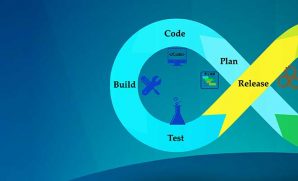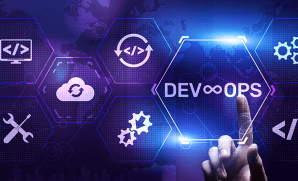Today pivotal disruptions are causing modern customer experiences to combine digital velocity with trust. The pace of technological changes has expanded market expectations for innovations – transforming the way we design, develop, and deliver experiences. Thus, time is of the essence.
By freeing up IT resources from routine administrative and maintenance tasks – which based on IDC reports – can account for >70% of IT activity – Salesforce cloud has enabled significant benefits for businesses. It is not a surprise that the revenues from the cloud for Salesforce customers [1].
In the earlier blog posts, we have gone through the several advantages of Salesforce for various industries, and how versatile and powerful a platform it is. In this blog of the SDFC series, we will understand why the best way to maximize the returns on your Salesforce investment, is to match it with a DevOps strategy.
The DevOps speed vs. reliability paradox
The velocity of delivering innovation is the number one reason for organizations to adopt DevOps. This ability to quickly develop and deploy software without sacrificing quality has always been mission-critical. And DevOps done well has shown much success in quick issue resolutions, instant feedback on features, saved cost, and gained market share. Because moving to the cloud significantly simplifies many issues in delivering IT functionalities and tailored industry products, Salesforce customers have often been able to innovate quickly without DevOps practices in place.
When organizations try to scale on product developments, tens of thousands of moving parts (sources of truth) – each offering business value – and no systematic way of tracking or deploying them, however, can create new business pains and chaos. Even without the hassle of building software from scratch and managing servers, growing complexities cause companies to suffer from issues inevitably, including out-of-sync collaborations and delays in deploying functionalities.
If we were to quickly look at some of the more profound technical hurdles during the application lifecycle management process, CI/CD, and overall business impact, they would include:
- Mismatch in development, testing, and production environments
- Managing changes and upgrades of applications
- Continuous tracking of code changes, code merges
- Uncertain deployment, inconsistent test results, added dependencies
- An unnecessary rise in development costs and delayed time-to-market
The paradox/irony is that while companies want to prioritize speed for competitiveness, they end up ignoring trust, quality, and security. And the only disaster can come from doing the wrong thing faster, which means slow innovation, more bugs, more downtime, and extra time and effort spent to maintain and remediate issues.
How SFDX is changing the DevOps game
Thankfully, research and industry experiences combined with a powerful platform like SDFC with the speed and reliability of DevOps can open up entirely new dimensions of efficiency and trust for ‘Devs’ and ‘Ops’ teams. Salesforce DX is a major strategic initiative that ensures that industry best practices, including DevOps and modular architecture, are possible on the platform. The term Salesforce DX encompasses a set of tools and features that allow companies to manage their ‘sources of truth’ and app development lifecycle.
As mentioned earlier, a ‘single source of truth or SSOT’ is often a moving target. It might be whichever environment houses the most stable or latest build of their project is about to be moved to the next higher environment. Traditional methods like ‘change sets’ required a user to manually keep track of every change made, without any ability to import the list of files, fields, or objects to speed up the process. The problem becomes even more complicated to coordinate when multiple developers are working on the same instance.
It is precisely here that Salesforce DX has sped up the entire CI/CD process with automation. The top core components and their benefits to consider are:
- Rapid deployment
- New features released faster
- Deployment process supported by an automated build
- Rapid innovation
- Improved alignment to changing markets
- Faster response to the evolving needs and time-to-market
- High efficiency
- Greater efficiency and fewer manual errors
- Manual intervention avoided along with parallel workflows for better coordination
- Source-driven development
- Sharing and collaborating on code is easy
- Ability to track changes for easier debugging through version control
Innovations fast-moving market demands
SFDX has been designed to reduce the complexities of the end-to-end DevOps method for applications on the Salesforce platform. A beneficial consequence of this is the high utilization of the Salesforce platform, less stress on the bandwidth of the ‘Devs’ teams, improvement in the quality of releases, and faster time-to-market through continuous deployments.
In today’s era, SFDX for DevOps is mission-critical when apps are expected to go live in a short span, for which people need to work and collaborate across geography using modern techniques. Especially for every company charged with delivering the ‘next-gen’ customer experience.
In the coming blogs, we shall explore the impact of Salesforce joining the Open Source System bandwagon, and the apparent benefits to reap with Salesforce Einstein. Stay tuned!!


















